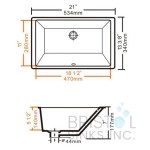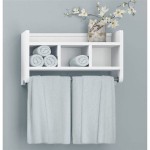Tile As Baseboard In Bathroom
Tile is a popular choice for bathroom flooring, but it can also be used as a stylish and functional baseboard. Baseboards protect the bottom of walls from moisture and damage, and they can also add a decorative touch to a bathroom.
There are many different types of tile that can be used as baseboards, including ceramic, porcelain, and natural stone. Ceramic and porcelain tiles are relatively inexpensive and easy to install, and they come in a wide variety of colors and styles. Natural stone tiles, such as marble and granite, are more expensive and difficult to install, but they can create a very luxurious look.
When choosing tile for a bathroom baseboard, it is important to consider the size of the room and the overall style of the bathroom. Larger tiles will create a more dramatic look, while smaller tiles will be less noticeable. The color and style of the tile should complement the other finishes in the bathroom, such as the flooring, walls, and fixtures.
Installing tile as a baseboard is a relatively simple process. The first step is to prepare the wall by removing any existing baseboards or molding. The wall should then be cleaned and sanded to create a smooth surface. Once the wall is prepared, the tile can be applied using thin-set mortar or adhesive.
Once the tile is installed, it should be grouted to fill in the gaps between the tiles. The grout should be sealed to protect it from moisture damage. Once the grout is dry, the baseboard is complete.
Tile baseboards are a durable and stylish way to protect the bottom of bathroom walls. They are relatively easy to install and maintain, and they can be customized to match any bathroom décor.
Benefits of Using Tile As Baseboard In Bathroom
There are many benefits to using tile as a baseboard in a bathroom, including:
- Durability: Tile is a very durable material that can withstand moisture and damage. It is also easy to clean and maintain.
- Style: Tile comes in a wide variety of colors and styles, so it can be customized to match any bathroom décor. Tile can also be used to create decorative patterns or borders.
- Water resistance: Tile is waterproof, so it is ideal for use in bathrooms. It will not absorb water or become damaged by moisture.
- Easy to clean: Tile is easy to clean and maintain. It can be swept, mopped, or scrubbed with a mild detergent.
How to Install Tile As Baseboard In Bathroom
Installing tile as a baseboard in a bathroom is a relatively simple process. The following steps will guide you through the process:
- Prepare the wall: Remove any existing baseboards or molding. Clean and sand the wall to create a smooth surface.
- Apply thin-set mortar or adhesive: Apply a thin layer of thin-set mortar or adhesive to the wall using a notched trowel. Be sure to follow the manufacturer's instructions for mixing and applying the mortar or adhesive.
- Install the tile: Press the tile into the mortar or adhesive. Be sure to align the tiles evenly and leave about 1/16 inch between each tile for grout.
- Grout the tile: Once the tile is installed, grout the gaps between the tiles. Be sure to follow the manufacturer's instructions for mixing and applying the grout.
- Seal the grout: Once the grout is dry, seal it to protect it from moisture damage. Be sure to follow the manufacturer's instructions for applying the sealer.
Once the grout is sealed, the baseboard is complete.

13 Best Tile Baseboard Ideas Bathroom Baseboards

Tile Baseboard Bathroom 2 3 Mayflower Construction Group

Subway Tile Bathroom Baseboards Design Ideas
Tile As Baseboard And Toekick Ceramic Advice Forums John Bridge

Tile Skirting Vs Wood Baseboard Molding Nomadic Decorator

What Are Tile Baseboards Hunker

Subway Tile Bathroom Baseboards Design Ideas

Subway Tile Bathroom Baseboards Design Ideas

Subway Tile Bathroom Baseboards Design Ideas

Shower Tile Corner Wall Base Molding Finishing Problem







